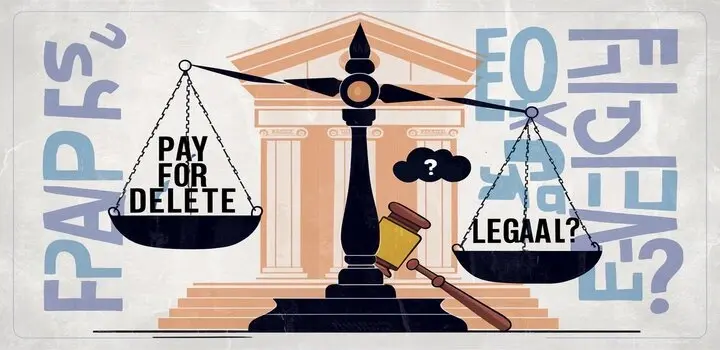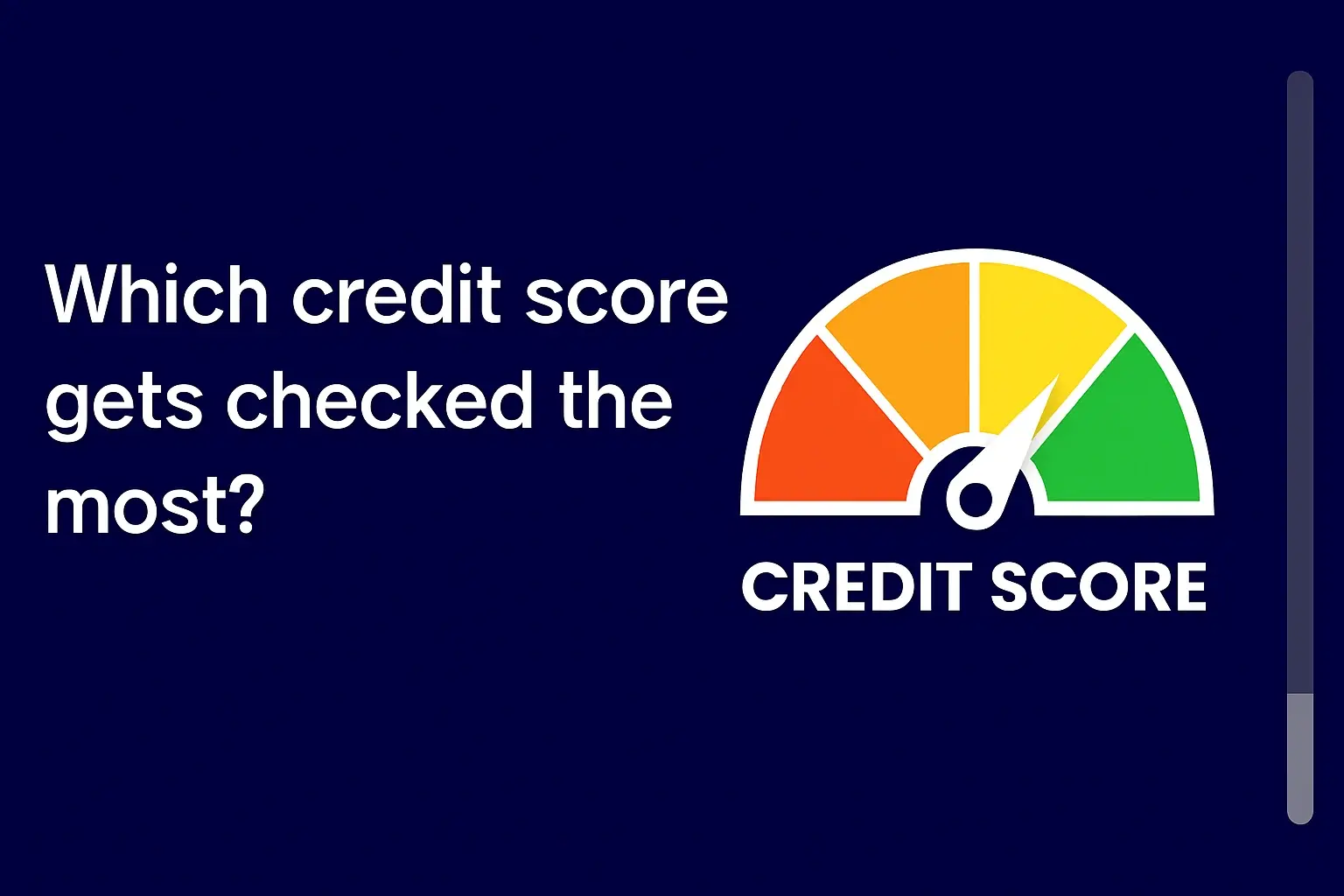-
Posted on: 14 Feb 2023

-
Revolving utilization is a crucial credit score metric, representing the ratio of your credit card balances to your total available credit. Understanding and managing this figure is key to maintaining a healthy credit profile and accessing better financial opportunities.
What is Revolving Utilization?
At its core, revolving utilization refers to the amount of revolving credit you are currently using compared to your total available revolving credit limit. Revolving credit is a type of credit that allows you to borrow money up to a certain limit, repay it, and then borrow it again. Credit cards are the most common example of revolving credit. The utilization ratio is a percentage that lenders and credit bureaus use to gauge how much of your available credit you're actively using. A lower ratio generally indicates responsible credit management, while a high ratio can signal financial strain and a higher risk to lenders.
Understanding this metric is paramount for anyone looking to improve or maintain a strong credit score. It's not just about how much you owe, but how much you owe relative to what you *can* borrow. This distinction is critical and often misunderstood by consumers. For instance, owing $5,000 on a credit card with a $10,000 limit results in a 50% utilization ratio, whereas owing $5,000 on a card with a $20,000 limit yields a 25% ratio. The absolute amount owed is the same, but the impact on your credit score is significantly different.
In the evolving landscape of credit scoring, revolving utilization has emerged as one of the most impactful factors. Credit scoring models, like FICO and VantageScore, place significant weight on this metric because it provides a clear, real-time snapshot of a borrower's credit behavior and their ability to manage debt responsibly. Lenders use this information to assess risk, and a favorable utilization ratio can open doors to better interest rates, higher credit limits, and easier loan approvals. Conversely, a high ratio can lead to credit score damage, making it harder to secure financing and potentially costing you more in interest over time.
The concept of revolving credit itself is foundational to understanding utilization. Unlike installment loans (like mortgages or auto loans) where you borrow a fixed amount and pay it back in predictable installments, revolving credit offers flexibility. You can borrow, repay, and re-borrow as needed, making it a versatile financial tool. However, this flexibility comes with the responsibility of managing the outstanding balance. The utilization ratio is the primary metric that quantifies this management. By monitoring and controlling your revolving utilization, you are actively participating in building a robust credit profile.
As we delve deeper, we will explore the nuances of calculating this ratio, its direct impact on your creditworthiness, and actionable strategies to keep it at optimal levels. The goal is to equip you with the knowledge to leverage this crucial credit metric to your financial advantage, ensuring you are well-positioned for your financial goals in 2025 and beyond.
Why Revolving Utilization Matters
The significance of revolving utilization extends far beyond a simple calculation; it's a primary indicator of financial health and creditworthiness. Lenders and credit bureaus scrutinize this ratio because it offers a transparent view of how responsibly an individual manages their available credit. A low revolving utilization ratio signals to creditors that you are not over-reliant on borrowed funds and can manage your finances effectively. This perception of responsibility directly translates into a higher credit score.
In 2025, the financial environment continues to emphasize data-driven decision-making for lenders. Revolving utilization is a readily available and highly predictive metric. It helps lenders assess the risk associated with extending credit. If you consistently maintain a high utilization ratio, it suggests you might be living close to your financial edge, potentially increasing the likelihood of default. This is why it's a major component in credit scoring models, often accounting for up to 30% of your FICO score. This substantial weight underscores its importance.
Beyond credit scores, a low utilization ratio can unlock significant financial benefits. These include:
- Access to Better Interest Rates: When you apply for loans, such as mortgages, auto loans, or personal loans, lenders offer interest rates based on your perceived risk. A strong credit score, bolstered by low revolving utilization, typically leads to lower interest rates, saving you thousands of dollars over the life of a loan.
- Higher Credit Limits: Lenders are more likely to increase your credit limits if they see you can manage your existing credit responsibly. This increased availability of credit, when used judiciously, can further improve your utilization ratio.
- Easier Loan Approvals: A healthy credit profile, which includes low revolving utilization, makes it easier to get approved for credit cards, loans, and even rental agreements or apartment applications.
- Reduced Financial Stress: Managing your credit utilization proactively can lead to less financial anxiety. Knowing you have a buffer of available credit and aren't constantly juggling high balances provides peace of mind.
Conversely, a high revolving utilization ratio can have detrimental effects. It can lead to:
- Lower Credit Scores: As mentioned, this is the most direct consequence. A score drop can make it difficult to achieve financial goals.
- Difficulty Obtaining New Credit: Lenders may view you as a high-risk borrower, leading to rejections for new credit applications.
- Higher Interest Rates: If approved, you'll likely face significantly higher interest rates, making borrowing more expensive.
- Potential for Debt Spirals: High balances accrue more interest, making it harder to pay down the principal, potentially leading to a cycle of debt.
The impact of revolving utilization is dynamic. It's not a static number but fluctuates with your spending and repayment habits. This means that actively managing it is an ongoing process, but one that yields substantial rewards. By understanding its importance and actively working to keep it low, you are investing in your financial future and building a foundation for long-term financial success. The ability to access favorable financial terms is directly linked to how well you manage this key metric.
Calculating Revolving Utilization
Understanding how revolving utilization is calculated is the first step toward managing it effectively. The process is straightforward, involving a simple ratio of your current balances to your total available credit. This calculation can be done for individual credit cards or aggregated across all your revolving credit accounts.
Individual Account Utilization
For a single credit card, the formula is:
Individual Utilization = (Current Balance on Card / Credit Limit of Card) * 100Example:
If you have a credit card with a $5,000 balance and a $10,000 credit limit, your individual utilization for that card is:
($5,000 / $10,000) * 100 = 50%This calculation helps you identify which specific cards might be contributing most significantly to a high overall utilization ratio. It allows for targeted strategies to reduce balances on problem accounts.
Overall Revolving Utilization
The more critical figure for your credit score is your overall revolving utilization, which considers all your revolving credit accounts. The formula is:
Overall Utilization = (Total Balances on All Revolving Accounts / Total Available Credit Limit Across All Revolving Accounts) * 100To calculate this, you need to sum up the current balances on all your credit cards and then sum up the credit limits of all those same cards.
Example:
Let's say you have three credit cards:
- Card A: Balance $3,000, Limit $6,000
- Card B: Balance $1,000, Limit $10,000
- Card C: Balance $4,000, Limit $5,000
First, calculate the total balances:
Total Balances = $3,000 + $1,000 + $4,000 = $8,000Next, calculate the total available credit limit:
Total Credit Limit = $6,000 + $10,000 + $5,000 = $21,000Now, calculate the overall utilization:
($8,000 / $21,000) * 100 = 38.1%This 38.1% is the figure that credit bureaus and scoring models will primarily use to assess your revolving utilization.
Important Considerations for Calculation
Reporting Dates: Credit card companies typically report your balance and credit limit to the credit bureaus once a month, usually on your statement closing date. Your credit utilization is calculated based on the balance reported on that specific date. This means that even if you pay down your balance significantly after the statement closing date, the lower balance might not be reflected in your credit report until the next reporting cycle.
Authorized Users: If you are an authorized user on someone else's credit card, their spending on that card can impact your credit utilization. The balance and limit of the card are typically factored into your overall utilization.
Credit Limit Increases: A credit limit increase on an existing card can lower your utilization ratio, even if your balance remains the same. For example, if your balance is $5,000 and your limit increases from $10,000 to $15,000, your utilization drops from 50% to 33.3%. This is a strategic way to improve your ratio.
Secured Credit Cards: For secured credit cards, the credit limit is usually equal to the security deposit. The calculation remains the same, but it's important to remember that the credit extended is backed by your own funds.
Store Credit Cards: Store credit cards, whether they are general-purpose or co-branded, are also revolving credit accounts and contribute to your utilization ratio.
By accurately calculating your revolving utilization, you gain a clear understanding of your current credit standing and can identify areas for improvement. This knowledge is the bedrock of effective credit management.
Types of Revolving Utilization
While the core concept of revolving utilization remains consistent, it's helpful to understand how it's viewed and calculated in different contexts. The primary distinction lies between individual account utilization and overall credit utilization. Both are important, but they serve slightly different purposes in assessing your credit health.
1. Individual Credit Card Utilization
This refers to the utilization ratio for each specific credit card you possess. As detailed in the calculation section, it's the ratio of the balance on a single card to its credit limit. For example, if you have a Visa card with a $2,000 balance and a $5,000 limit, your individual utilization for that card is 40%.
Why it's important:
- Targeted Management: It helps you pinpoint which cards might be problematic. If one card has a very high utilization (e.g., over 70-80%), it can disproportionately drag down your overall score, even if other cards are well-managed.
- Lender Scrutiny: Some lenders may look at individual card utilization when deciding whether to approve a new credit application or increase a credit limit, especially if they see a pattern of maxing out individual cards.
- Credit Limit Increase Strategy: Focusing on lowering the utilization on a card with a high balance relative to its limit can be a strategic move. Paying down balances on cards with lower limits can have a more immediate impact on the individual utilization ratio.
2. Overall Revolving Utilization (Aggregate Utilization)
This is the more commonly cited and impactful figure. It represents the total outstanding balance across all your revolving credit accounts (credit cards, lines of credit) divided by the total available credit limit across all those accounts. This is the metric that credit scoring models, like FICO and VantageScore, weigh most heavily under the "credit utilization" category.
Why it's important:
- Primary Credit Score Driver: This is the number that has the most significant impact on the credit utilization component of your credit score. A low overall utilization ratio is a strong positive signal to lenders.
- Holistic Financial Picture: It provides a broader view of your credit management habits. It shows how much of your total available borrowing power you are utilizing across your entire credit portfolio.
- Lender Perspective: When lenders assess your overall creditworthiness, they look at your total debt obligations relative to your total available credit. A high aggregate utilization suggests you are heavily reliant on borrowed funds.
3. Secured vs. Unsecured Revolving Utilization
This distinction relates to the type of credit product:
- Unsecured Revolving Credit: This includes most standard credit cards and personal lines of credit. They are not backed by collateral. Their utilization is calculated as described above and is a major factor in credit scores.
- Secured Revolving Credit: This includes things like home equity lines of credit (HELOCs) or secured credit cards. For secured credit cards, the calculation is the same as unsecured cards. For HELOCs, the utilization is typically viewed as part of your overall debt-to-income ratio and can influence lending decisions, though its direct impact on the credit utilization *score component* might be less pronounced than for credit cards. However, lenders still consider the outstanding balance on these lines.
4. Revolving Utilization vs. Installment Loan Utilization
It's crucial to differentiate revolving utilization from installment loan utilization. Revolving credit is characterized by a credit limit that replenishes as you pay it down, allowing for repeated borrowing. Installment loans, such as mortgages, auto loans, or student loans, involve borrowing a fixed amount that is repaid over a set period with regular, fixed payments. The "utilization" for installment loans is essentially the remaining balance on the loan. While the total debt load (including installment loans) impacts your creditworthiness and debt-to-income ratio, the *credit utilization ratio* specifically refers to revolving credit.
Understanding these different facets of revolving utilization allows for a more nuanced approach to credit management. By focusing on keeping both individual card balances and the overall aggregate balance low relative to their limits, you significantly enhance your credit profile.
The Impact of Revolving Utilization on Your Credit Score
Revolving utilization is one of the most influential factors in determining your credit score. Credit scoring models, such as FICO and VantageScore, allocate a substantial portion of your score to this metric, underscoring its importance to lenders. Understanding this impact is crucial for anyone aiming to build or maintain a strong credit standing.
Credit Utilization as a Key Scoring Factor
For FICO scores, credit utilization is the second-largest factor, accounting for approximately 30% of your score. This category is often referred to as "Amounts Owed." Similarly, VantageScore also places significant weight on this factor, categorizing it as "Credit Utilization and Available Credit."
The underlying principle is that individuals who use a smaller percentage of their available revolving credit are generally considered less risky borrowers. They demonstrate a capacity to manage debt responsibly and are less likely to default on their obligations. Conversely, high utilization suggests that a borrower may be overextended or experiencing financial difficulties.
How Utilization Ratios Affect Scores
The impact is generally linear: the lower your utilization ratio, the better it is for your credit score. There isn't a single "magic number" that guarantees a perfect score, as other factors also play a role. However, credit experts widely agree on certain thresholds:
- Excellent: Below 10% - This is considered the ideal range. Maintaining utilization below 10% signals to lenders that you have ample available credit and are not heavily reliant on borrowed funds. This is a strong indicator of financial discipline.
- Good: 10% - 30% - This range is still viewed favorably. While not as optimal as below 10%, it indicates responsible credit management and is generally considered healthy.
- Fair: 30% - 50% - This range starts to raise some concerns. While not necessarily a red flag, it suggests you are using a significant portion of your available credit.
- Poor: Above 50% - Utilization above 50% can start to negatively impact your credit score. The higher it goes, the more significant the damage.
- Very Poor: Above 70-80% (or maxed out cards) - Reaching or exceeding 70-80% utilization, or maxing out individual cards, can severely damage your credit score. This signals high risk to lenders.
Example of Score Impact (Illustrative):
Imagine two individuals with identical credit histories except for their revolving utilization:
- Person A: Overall utilization of 5% ($1,000 balance on $20,000 total credit limit).
- Person B: Overall utilization of 60% ($12,000 balance on $20,000 total credit limit).
Person A will almost certainly have a significantly higher credit score than Person B, assuming all other factors are equal. The difference in their utilization ratio directly translates to a difference in their creditworthiness assessment.
The Role of Individual Card Utilization
While overall utilization is paramount, individual card utilization also plays a role. Credit scoring models may penalize borrowers who consistently max out one or more credit cards, even if their overall utilization is relatively low. This is because maxing out a card can be interpreted as a sign of financial distress or poor spending habits.
For instance, if you have $50,000 in total credit and $10,000 in balances, your overall utilization is 20%. However, if that $10,000 is concentrated on one card with a $10,000 limit (100% utilization), while your other cards have zero balances, the scoring model might still penalize you more than someone with $2,000 on five different cards, each with a $10,000 limit (20% individual utilization on each).
Timing and Reporting
It's essential to remember that credit bureaus update your credit report based on information provided by your creditors, typically on your statement closing date. This means your credit utilization is assessed based on the balance reported on that date. Paying down balances *after* your statement closing date but *before* your payment due date won't immediately lower your reported utilization. To see a positive impact on your score, you need to ensure your balances are low on or before your statement closing date.
The Power of Lowering Utilization
The good news is that revolving utilization is a highly responsive credit factor. Unlike factors like payment history or the length of your credit history, which take time to improve, your utilization ratio can be significantly improved in a short period by strategic debt repayment or credit limit increases. This makes it one of the most actionable areas for credit score improvement.
In summary, revolving utilization is a powerful determinant of your credit score. By understanding its weight and actively managing your balances to keep them low, you can significantly enhance your creditworthiness, leading to better financial opportunities.
Ideal Revolving Utilization Ratios for 2025
In 2025, the principles of managing revolving utilization remain consistent with previous years, emphasizing low ratios for optimal credit health. Credit scoring models continue to prioritize borrowers who demonstrate responsible credit management by not over-utilizing their available credit. While exact score impacts can vary based on individual credit profiles and the specific scoring model used (FICO, VantageScore, etc.), there are generally accepted ideal ranges.
The Golden Rule: Below 30%
The most widely cited guideline for healthy revolving utilization is to keep your overall ratio below 30%. This threshold is considered good by most credit scoring systems and indicates that you are using a manageable portion of your available credit. Lenders view this as a sign of financial stability and responsible borrowing.
Striving for the Best: Below 10%
For those aiming for the highest possible credit scores, the target is to keep revolving utilization below 10%. This is often referred to as "prime" utilization. A ratio this low signals to lenders that you have substantial available credit and are not dependent on high balances. This can lead to:
- Higher credit scores.
- Better approval rates for new credit applications.
- Access to the most competitive interest rates on loans and credit cards.
- Potentially higher credit limits in the future.
Understanding the Nuances
While overall utilization is critical, it's important to remember that individual card utilization also matters. Some credit scoring algorithms may penalize a high utilization on a single card more heavily, even if the overall ratio is within acceptable limits. For example, having one card maxed out at 100% utilization, even with other cards at 0%, might be viewed less favorably than spreading balances evenly across multiple cards at lower utilization rates.
The Impact of High Utilization (Above 30%)
As your utilization ratio increases above 30%, the negative impact on your credit score becomes more pronounced. Here's a general breakdown:
- 30% - 50%: This range is often considered "fair" to "good." Your score may start to see a noticeable decline compared to lower ratios, but it's not yet a severe red flag.
- 50% - 70%: This range is typically considered "fair" to "poor." You are likely experiencing a significant hit to your credit score.
- 70% - 100%: This range is considered "poor" and can severely damage your credit score. High balances relative to limits suggest a high risk of default to lenders. Maxing out cards (100% utilization) is particularly detrimental.
What About Zero Utilization?
While a low utilization is good, having a 0% utilization on all your credit cards might not be ideal for score maximization. Credit scoring models look for a history of responsible credit use. If you never carry a balance and always pay in full before the statement closing date, your reported utilization might be 0%. While this isn't inherently bad, some experts suggest that carrying a very small balance (e.g., less than 1-5% of the limit) on one card and paying it off in full after the statement closes can demonstrate active credit usage and potentially boost scores slightly. However, for most individuals, aiming for below 10% is a more practical and effective strategy than trying to achieve perfect zero utilization.
Strategies to Achieve Ideal Ratios in 2025
Achieving and maintaining ideal revolving utilization ratios requires proactive management. Here are key strategies:
- Pay Down Balances: The most direct way to lower utilization is to pay down your credit card balances. Focus on cards with the highest utilization first.
- Make Multiple Payments: Since utilization is reported on your statement closing date, making payments *before* this date can lower the reported balance. Consider making payments throughout the month, especially if you tend to spend a lot.
- Request Credit Limit Increases: Strategically requesting credit limit increases on your existing cards can lower your utilization ratio, provided your spending remains the same. Ensure you have a good payment history before requesting an increase.
- Avoid Maxing Out Cards: Make a conscious effort not to spend close to your credit limit on any single card.
- Spread Balances: If possible, try to distribute your spending across multiple cards rather than concentrating it on one.
- Consider a Balance Transfer: If you have high-interest debt, a balance transfer to a card with a 0% introductory APR can help you pay down the principal faster, thus lowering utilization. Be mindful of transfer fees and the APR after the introductory period.
By understanding and actively working towards these ideal revolving utilization ratios in 2025, you can significantly enhance your credit score and unlock better financial opportunities.
Strategies to Lower Revolving Utilization
Lowering your revolving utilization ratio is one of the most effective ways to quickly improve your credit score. Since this factor carries significant weight in credit scoring models, strategic management can yield substantial benefits. Here are proven strategies to reduce your revolving utilization:
1. Pay Down Your Balances Strategically
This is the most direct and impactful method. Focus on reducing the amount you owe on your credit cards. Consider these approaches:
- Target High-Utilization Cards: Prioritize paying down balances on cards that are close to their credit limits. Even a small reduction can make a difference.
- Debt Snowball Method: Pay the minimum on all cards except the one with the smallest balance. Put any extra funds towards that smallest balance until it's paid off, then move to the next smallest. This provides psychological wins.
- Debt Avalanche Method: Pay the minimum on all cards except the one with the highest interest rate. Put any extra funds towards that high-interest card. This saves you the most money on interest over time.
2. Make Payments Before the Statement Closing Date
Your credit utilization is typically reported to credit bureaus based on the balance shown on your statement at the closing date. If you make a payment *after* the closing date but before the due date, that payment might not be reflected until the next reporting cycle. To see a faster impact:
- Monitor Statement Closing Dates: Know when your statement closing dates are for each card.
- Make Payments Early: Pay down your balance a few days before the statement closing date to ensure the lower balance is reported.
- Multiple Payments: If you spend heavily during the month, consider making multiple smaller payments throughout the billing cycle to keep the reported balance low.
3. Request Credit Limit Increases
This strategy lowers your utilization ratio without necessarily paying down debt, provided your spending habits remain the same. A higher credit limit means a larger denominator in the utilization ratio calculation.
- Timing is Key: Request increases when you have a good payment history and have been responsible with your current credit line.
- Check Issuer Policies: Some issuers allow automatic increases based on good behavior, while others require a manual request.
- Be Aware of Hard Inquiries: Some credit limit increase requests may result in a hard inquiry on your credit report, which can temporarily lower your score. However, many issuers do not perform hard inquiries for limit increase requests. Check with your card issuer.
4. Avoid Maxing Out Credit Cards
This seems obvious, but it's crucial. Spending close to your credit limit on any card can severely damage your credit score, even if your overall utilization is low. Aim to keep individual card utilization well below 30%, ideally below 10%.
5. Consolidate Debt (with Caution)
If you have multiple high-interest credit cards, consolidating them can help. Options include:
- Balance Transfer Credit Cards: Transfer balances to a card with a 0% introductory APR. This allows you to pay down principal without accruing interest for a period. Be aware of balance transfer fees and the APR after the intro period.
- Personal Loans: Take out a personal loan to pay off credit card balances. This converts revolving debt into installment debt, which can improve your utilization ratio. However, it doesn't reduce your overall debt, and you'll have a new monthly payment.
Caution: Ensure that consolidating debt doesn't encourage you to run up balances on the newly freed-up credit lines. The goal is to reduce debt, not just move it around.
6. Become an Authorized User (with Caveats)
If a trusted friend or family member with excellent credit is willing to add you as an authorized user to their credit card, their positive credit history and low utilization on that card can potentially benefit your credit score. However, their negative activity (high balances, missed payments) can also hurt your score. Ensure the primary cardholder manages the account responsibly.
7. Negotiate with Creditors
In difficult financial situations, you might be able to negotiate with your credit card company. They may be willing to lower your interest rate, waive fees, or even increase your credit limit to help you manage your debt better. This is less common for routine utilization reduction but can be an option in hardship cases.
8. Monitor Your Credit Report Regularly
Check your credit reports from Equifax, Experian, and TransUnion regularly. Ensure your balances and credit limits are reported accurately. If you find errors, dispute them immediately.
By implementing these strategies, you can effectively lower your revolving utilization, leading to a healthier credit score and improved financial standing.
Common Mistakes to Avoid with Revolving Utilization
Navigating the world of credit can be complex, and misunderstandings about revolving utilization can lead to costly mistakes. Being aware of these common pitfalls can help you avoid damaging your credit score and financial well-being.
Mistake 1: Focusing Only on Overall Utilization, Ignoring Individual Cards
While overall utilization is the most heavily weighted factor, having one or more credit cards maxed out can negatively impact your score. Lenders may interpret this as a sign of financial distress or poor management, even if your total utilization is low.
Solution: Monitor the utilization of each individual card. Aim to keep each card's utilization below 30%, and ideally below 10%, even if your aggregate utilization is excellent.
Mistake 2: Paying Bills After the Statement Closing Date
Many people believe that as long as they pay their credit card bill by the due date, their utilization is managed. However, credit bureaus typically receive balance information from creditors on the statement closing date. If you pay your bill after this date, the higher balance will be reported, potentially hurting your score.
Solution: Make payments *before* your statement closing date. This ensures that the lower balance is reported to the credit bureaus.
Mistake 3: Closing Old, Unused Credit Cards
Closing an old credit card reduces your total available credit. If you have existing balances on other cards, this action will increase your overall utilization ratio, potentially lowering your credit score.
Solution: Keep older, unused credit cards open, especially if they have no annual fee. This helps maintain a longer credit history and a higher total credit limit, both beneficial for your score.
Mistake 4: Thinking All Debt Counts the Same
Credit utilization ratios specifically apply to revolving credit (credit cards, lines of credit). Installment loans (mortgages, auto loans, student loans) do not factor into this ratio. While total debt is important for lenders, the utilization ratio is a distinct metric.
Solution: Understand that managing credit card balances is key for the utilization ratio. While managing installment loan payments is crucial for overall credit health, it doesn't directly impact your utilization percentage.
Mistake 5: Not Monitoring Credit Reports for Errors
Inaccurate information on your credit report, such as incorrect balances or credit limits, can negatively affect your utilization ratio and credit score. If these errors go unnoticed, they can persist for a long time.
Solution: Obtain your free credit reports annually from each of the three major bureaus (Equifax, Experian, TransUnion) and review them carefully for any discrepancies. Dispute any errors promptly.
Mistake 6: Assuming a Recent Credit Limit Increase Immediately Lowers Utilization
While a credit limit increase *can* lower your utilization, its impact is only realized when your balance is reported after the increase. If you continue to spend at the same rate, the benefit might be short-lived.
Solution: Leverage credit limit increases by keeping your spending consistent. Don't view a higher limit as an invitation to spend more; instead, see it as a tool to improve your utilization ratio.
Mistake 7: Relying Solely on Credit Card Rewards Over Responsible Spending
Chasing rewards points or cashback by overspending on credit cards can lead to high balances and increased utilization. The value of rewards is often negated by the interest paid on those balances.
Solution: Prioritize responsible spending and low utilization over rewards. Use credit cards for purchases you would make anyway and can afford to pay off promptly.
Mistake 8: Not Understanding Authorized User Impact
Being added as an authorized user can help if the primary cardholder has excellent credit and low utilization. However, if the primary user has high balances or misses payments, it can negatively impact your credit score.
Solution: Only agree to be an authorized user (or add someone) if you are confident in the primary cardholder's credit management habits. Understand that their activity directly affects your report.
By avoiding these common mistakes, you can ensure that your management of revolving credit actively contributes to a strong and healthy credit profile.
Revolving Utilization vs. Other Credit Metrics
Revolving utilization is a critical component of credit health, but it's not the only one. Understanding how it fits into the broader picture of credit scoring and financial assessment is essential. Here’s a comparison with other key credit metrics:
1. Revolving Utilization vs. Credit Card Balances
Credit Card Balances: This is the absolute amount of money you owe on your credit cards. For example, owing $5,000 on a credit card.
Revolving Utilization: This is the *ratio* of your credit card balances to your total available credit limit. For example, $5,000 owed on a $10,000 limit is 50% utilization.
Difference: While high balances can contribute to high utilization, it's the ratio that matters most for credit scores. Someone with $5,000 owed on a $50,000 limit has a much lower utilization (10%) and a better credit impact than someone with $5,000 owed on a $10,000 limit (50%).
2. Revolving Utilization vs. Debt-to-Income Ratio (DTI)
Revolving Utilization: Focuses specifically on revolving credit (credit cards, lines of credit) and compares balances to credit limits. It's a key factor in credit scoring models.
Debt-to-Income Ratio (DTI): Compares your total monthly debt payments (including mortgages, auto loans, student loans, *and* minimum credit card payments) to your gross monthly income. It's primarily used by mortgage lenders and other loan providers to assess your ability to handle monthly payments.
Difference: DTI is about your capacity to *afford* monthly payments relative to your income. Revolving utilization is about how much of your available credit you are *using*. A person can have a low DTI but high revolving utilization, or vice versa.
Example: Someone earning $10,000/month with $1,000 in total monthly debt payments has a 10% DTI (excellent). However, if their credit cards have high balances, their revolving utilization could still be high and negatively impact their credit score.
3. Revolving Utilization vs. Payment History
Payment History: This is the most significant factor in credit scoring (around 35% of FICO score). It reflects whether you pay your bills on time. Late payments, defaults, bankruptcies, etc., severely damage your score.
Revolving Utilization: This is the second most significant factor (around 30% of FICO score). It reflects how much of your available credit you are using.
Difference: While both are crucial, a perfect payment history with high utilization will still result in a lower score than a perfect payment history with low utilization. However, even with low utilization, consistent late payments will devastate your score more than high utilization alone.
Analogy: Payment history is like your overall health record – consistent good habits are vital. Utilization is like your current weight – it needs to be within a healthy range for optimal performance.
4. Revolving Utilization vs. Length of Credit History
Length of Credit History: This factor considers the average age of your credit accounts and the age of your oldest account. A longer history generally benefits your score (around 15% of FICO score).
Revolving Utilization: As discussed, this is about current credit usage.
Difference: You can't quickly change your credit history length, but you can rapidly improve your utilization. A younger credit history with low utilization might score better than an older history with high utilization.
5. Revolving Utilization vs. Credit Mix and New Credit
Credit Mix: Having a variety of credit types (revolving credit, installment loans) can positively influence your score (around 10% of FICO score). This shows you can manage different types of debt.
New Credit: Opening many new accounts in a short period can lower your score temporarily (around 10% of FICO score) as it may signal increased risk.
Difference: These factors are important but generally have less impact than payment history and utilization. While managing your credit mix is good, focusing on maintaining low revolving utilization is often a more immediate and impactful strategy for score improvement.
In essence, revolving utilization is a snapshot of your current credit management behavior concerning your available credit. It works in tandem with other factors like payment history, credit age, and debt load to create your overall credit profile. While all components are important, actively managing revolving utilization offers one of the most accessible and potent levers for improving your credit score.
Expert Tips for Managing Revolving Utilization
Successfully managing revolving utilization requires a proactive and informed approach. Here are expert-backed tips to help you keep your ratios low and your credit score healthy:
1. Automate Payments (But Monitor Closely)
Set up automatic minimum payments for all your credit cards to avoid late fees and negative marks on your payment history. However, don't rely solely on this. You still need to monitor your spending and make additional payments strategically before your statement closing date to reduce reported balances.
2. Utilize Credit Monitoring Services
Many credit card issuers and financial institutions offer free credit monitoring services. These services can alert you to changes in your credit score, new accounts opened in your name, and significant shifts in your credit utilization. Early alerts allow you to address potential issues promptly.
3. Leverage "Just-in-Time" Payments
If you know your statement closing dates, you can time your payments to maximize the benefit. For example, if your statement closes on the 20th and your due date is the 15th of the next month, you can make a large payment on the 18th or 19th to ensure a low balance is reported for that cycle. This requires discipline and attention to detail.
4. Understand Your Card Issuer's Reporting Cycle
Not all card issuers report on the exact same day relative to the statement closing date. Some might report a few days after, while others might report on the closing date itself. Knowing your specific issuer's reporting schedule can help you time your payments more effectively.
5. Negotiate Lower Interest Rates
If you carry balances, high interest rates can make it harder to pay down principal. Call your credit card issuer and ask for a lower Annual Percentage Rate (APR). If you have a good payment history, they may be willing to negotiate. This can help you pay down debt faster, thus lowering utilization.
6. Consider a Debt Management Plan (DMP) for Overwhelming Debt
If you're struggling to manage multiple high-interest debts and your utilization is consistently high, a Debt Management Plan through a reputable non-profit credit counseling agency might be an option. They can negotiate with creditors on your behalf, potentially lowering interest rates and consolidating payments. Be sure to choose a certified agency.
7. Use Secured Credit Cards Strategically
If you have a poor credit history, a secured credit card can be a stepping stone. By making regular, on-time payments and keeping the utilization low on these cards, you can rebuild your credit. The security deposit acts as the credit limit, so managing this effectively is key.
8. Educate Yourself on Credit Scoring Models
While you don't need to be an expert, understanding that different scoring models (FICO 8, FICO 9, VantageScore 3.0, VantageScore 4.0) exist and may weigh factors slightly differently can be helpful. However, the core principle of low revolving utilization remains consistent across most models.
9. Plan Large Purchases Carefully
If you anticipate making a large purchase that will significantly increase your credit card balance, consider how it will impact your utilization. If possible, save up for the purchase or be prepared to pay down a substantial portion of the balance immediately after making it to mitigate the utilization spike.
10. Avoid Applying for Too Much Credit at Once
While increasing credit limits can help, opening too many new accounts in a short period can negatively impact your score due to hard inquiries and a shortened average account age. Space out credit applications strategically.
By incorporating these expert tips into your financial routine, you can effectively manage your revolving utilization, maintain a strong credit score, and pave the way for better financial opportunities in 2025 and beyond.
Conclusion: Mastering Your Credit Health
Understanding and actively managing your revolving utilization is not merely a financial chore; it's a cornerstone of robust credit health and a gateway to achieving your financial aspirations. As we've explored, revolving utilization—the ratio of your used credit to your total available credit—is a powerful metric that significantly influences your credit score. In 2025, lenders continue to prioritize borrowers who demonstrate fiscal discipline through low utilization, viewing it as a strong indicator of lower risk and responsible financial behavior.
The impact of maintaining a low revolving utilization ratio, ideally below 10% and certainly below 30%, cannot be overstated. It directly translates to higher credit scores, which in turn unlock access to more favorable interest rates on loans, easier approval for credit applications, and potentially higher credit limits. Conversely, neglecting this metric can lead to a damaged credit score, making borrowing more expensive and hindering your ability to secure essential financial products.
The strategies for managing revolving utilization are accessible and actionable. By consistently paying down balances, making payments strategically before statement closing dates, and judiciously requesting credit limit increases, you can actively improve your utilization ratio. Furthermore, avoiding common pitfalls such as closing old accounts unnecessarily or focusing solely on overall utilization while neglecting individual card balances will safeguard your credit profile.
Remember that revolving utilization is just one piece of the credit puzzle, alongside payment history, credit history length, credit mix, and new credit. However, its responsiveness makes it one of the most impactful factors you can influence quickly. By mastering revolving utilization, you are taking a significant step towards comprehensive credit management. We encourage you to review your credit reports, calculate your current utilization, and implement the strategies discussed. Taking control of your revolving utilization today is an investment in your financial future, empowering you with greater financial flexibility and security for years to come.











